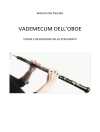French composer Maurice Ravel was described by critics as a magician, conjurer, and illusionist. Scholars have been aware of this historical curiosity, but none so far have explained why Ravel attracted such critiques or what they might tell us about how to interpret his music. Magician of Sound examines Ravel’s music through the lens of illusory experience, considering how timbre, orchestral effects, figure/ground relationships, and impressions of motion and stasis might be experienced as if they were conjuring tricks. Applying concepts from music theory, psychology, philosophy, and the history of magic, Jessie Fillerup develops an approach to musical illusion that newly illuminates Ravel’s fascination with machines and creates compelling links between his music and other forms of aesthetic illusion, from painting and poetry to fiction and phantasmagoria. Fillerup analyzes scenes of enchantment and illusory effects in Ravel’s most popular works, including Boléro, La Valse, Daphnis et Chloé, and Rapsodie espagnole, relating his methods and musical effects to the practice of theatrical conjurers. Drawing on a rich well of primary sources, Magician of Sound provides a new interdisciplinary framework for interpreting this enigmatic composer, linking magic and music.
Tabella dei contenuti
List of Examples, Figures, and Table
Acknowledgments
Introduction
1 Misdirection, or Image, Illusion, and Musical Motion
2 Emblems of Enchantment
3 The Machine Bewitched
4 Illusions of Form and Void
5 Motion, Illusion, and Phantasmagoria in
La Valse
Conclusion: Time, Space,
Sortilèges
Bibliography
Index
Circa l’autore
Jessie Fillerup is Associate Professor of Musicology at University of Richmond. Her work has appeared in 19th-Century Music, Journal of the Royal Musical Association, and Cambridge Opera Journal.












